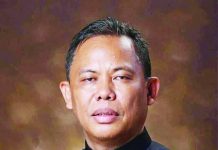
Process to take long
TACLOBAN CITY – The proposed San Juanico Bridge II is expected to commence civil works within the term of President Ferdinand Marcos Jr., though its completion might extend into the next administration.
This was disclosed by Engr. Edgar Tabacon, the regional director of the Department of Public Works and Highways (DPWH), during a media interview on Thursday, July 18.
Tabacon mentioned that due to the “long process” involved in the proposed San Juanico Bridge II, its completion is not anticipated within President Marcos’s term, which ends in 2028.
“Of course, we want this San Juanico Bridge II to be completed during the term of President Marcos, but considering the long process it would take, we expect a spillover into the next administration,” the DPWH regional director said.
Tabacon revealed that aside from the feasibility study, processing a loan agreement could take 15 months, and another 15 months would be needed for the procurement process.
Following these steps, civil works would commence, which Tabacon hopes will start under the Marcos administration.
Tabacon noted that, given the substantial funding required for the project, the national government would need a foreign funder.
While he did not specify the amount during the media conference, the DPWH has previously reported that at least P9.17 billion would be needed for the proposed San Juanico Bridge II project.
The feasibility study for the project is being conducted by the Japan International Cooperation Agency (JICA), which began an onsite study with a Japanese team on November 17, 2023. The team is expected to complete their feasibility study by November of this year.
The study includes considerations such as the number of lanes, traffic operations, options for the second bridge, and the rehabilitation of the original San Juanico Bridge.
Tabacon also stated that, given JICA’s involvement in the feasibility study, it is likely that Japanese technology would be used in the construction of the proposed San Juanico Bridge II.
Incidentally, the original San Juanico Bridge, spanning more than 2.1 kilometers and connecting Leyte and Samar Islands, was constructed and completed under the administration of former President Ferdinand Marcos Sr., the father of the current President.
Tabacon confirmed that, from the original starting point in Babatngon, Leyte, the proposed San Juanico Bridge II will now begin in Tacloban City, the regional center, and connect to Sta. Rita on the Samar side.
The change in location was due to practical reasons, considering that Tacloban is the regional capital of Eastern Visayas and has a shorter distance compared to Babatngon, reducing the span by 1.2 kilometers.
“The shorter the distance, the lower the cost,” Tabacon said.
The government has proposed constructing a new bridge connecting Leyte and Samar Islands to address the expected increase in traffic in the future.
The construction of the current San Juanico Bridge started in 1969 and was completed in 1972, but it was only inaugurated on July 2, 1973, for the birthday of former First Lady Imelda Marcos, who is from Leyte.
The bridge not only links the two islands but has also become one of Eastern Visayas’ top tourism draws.
JOEY A. GABIETA



